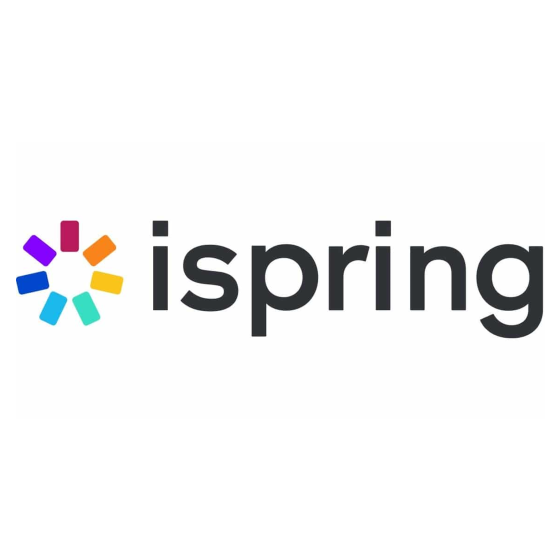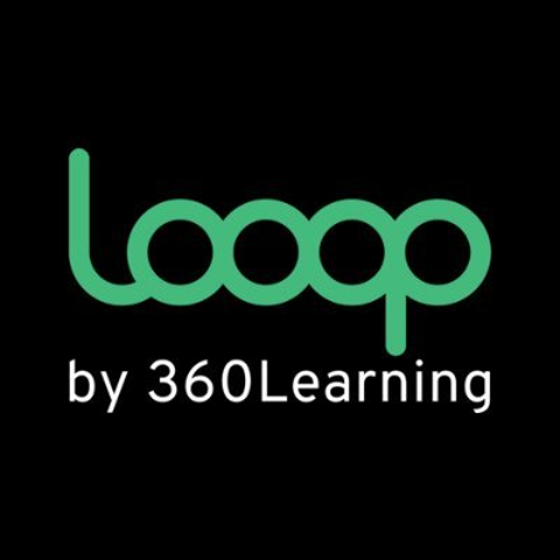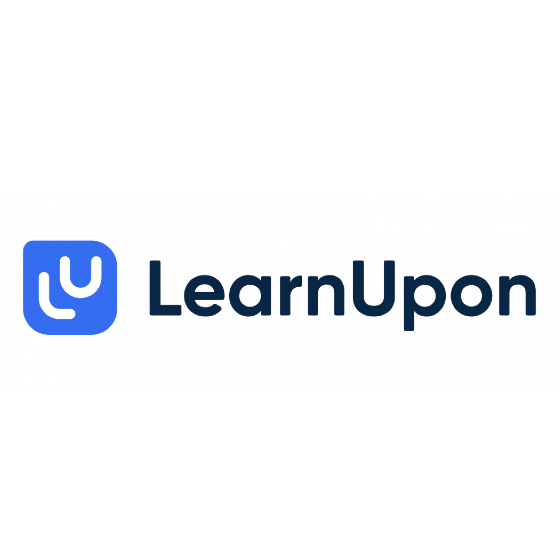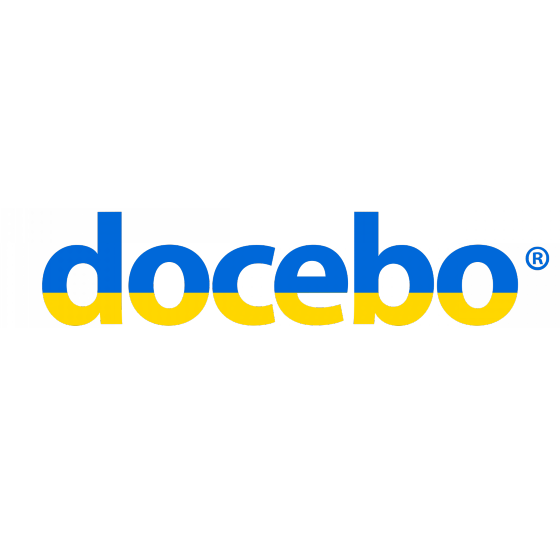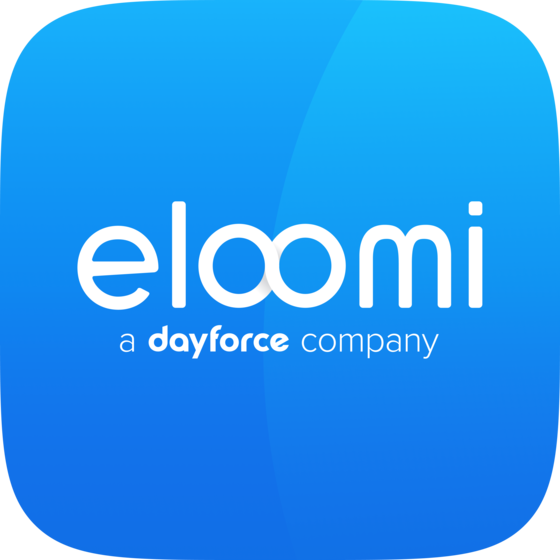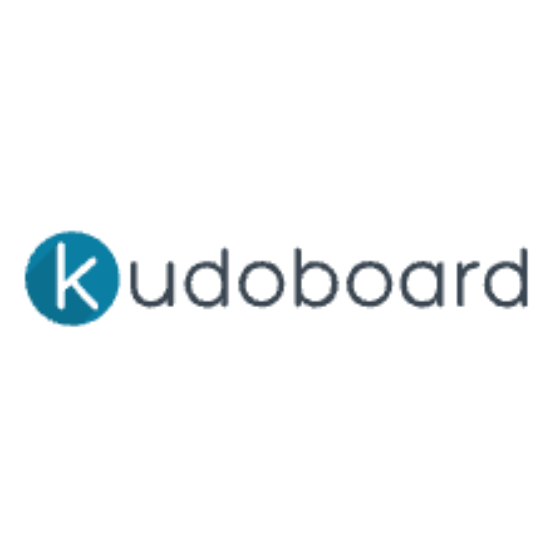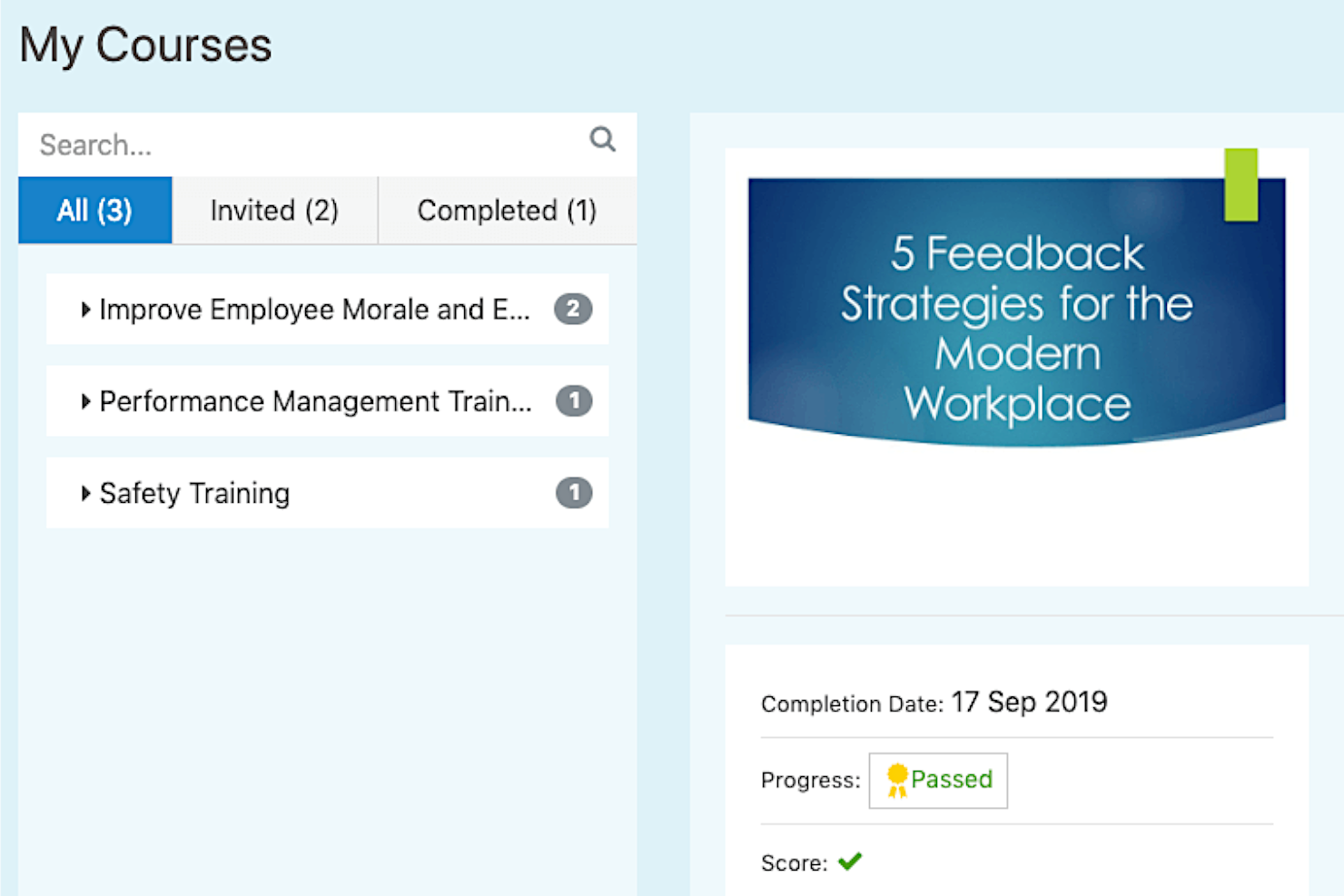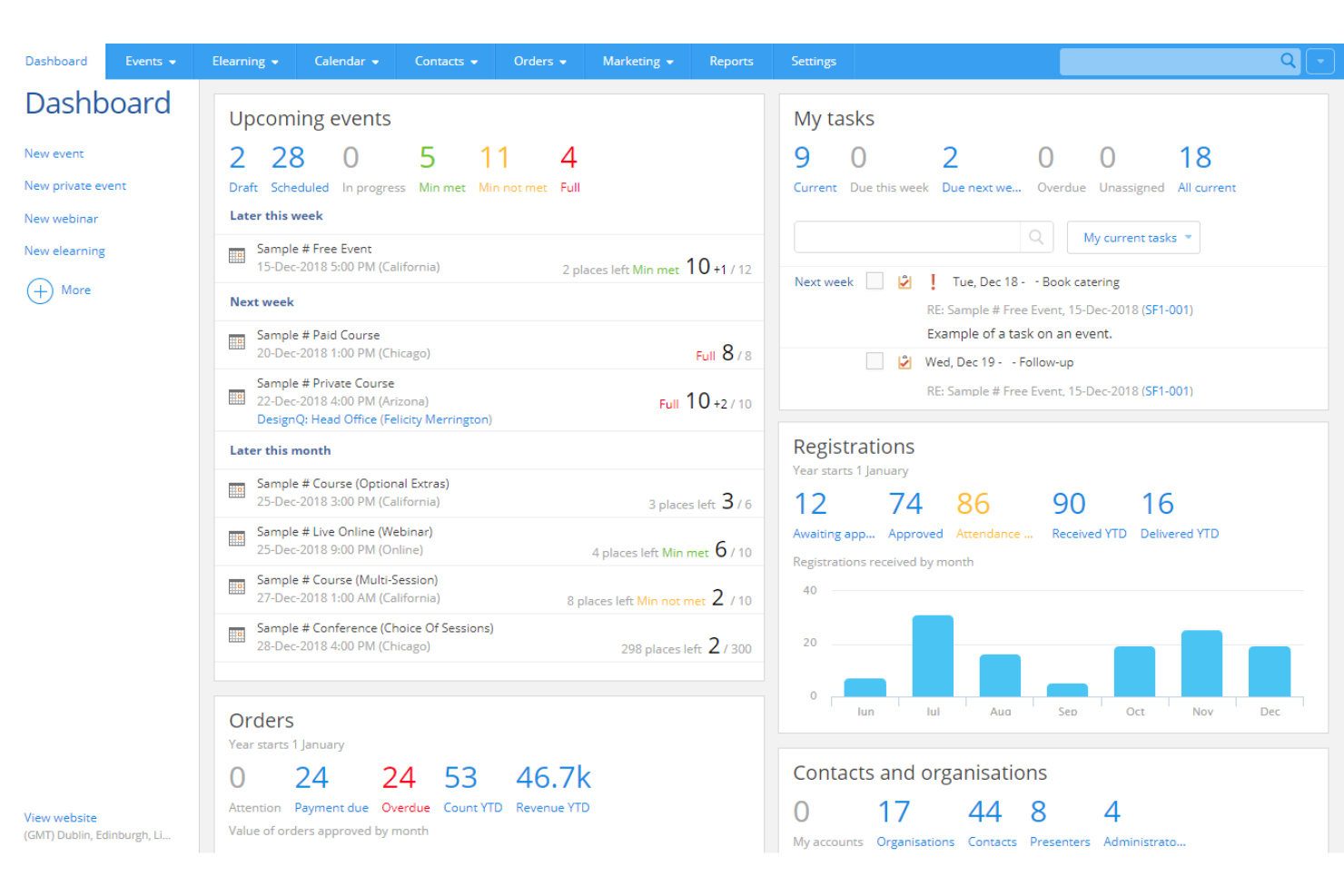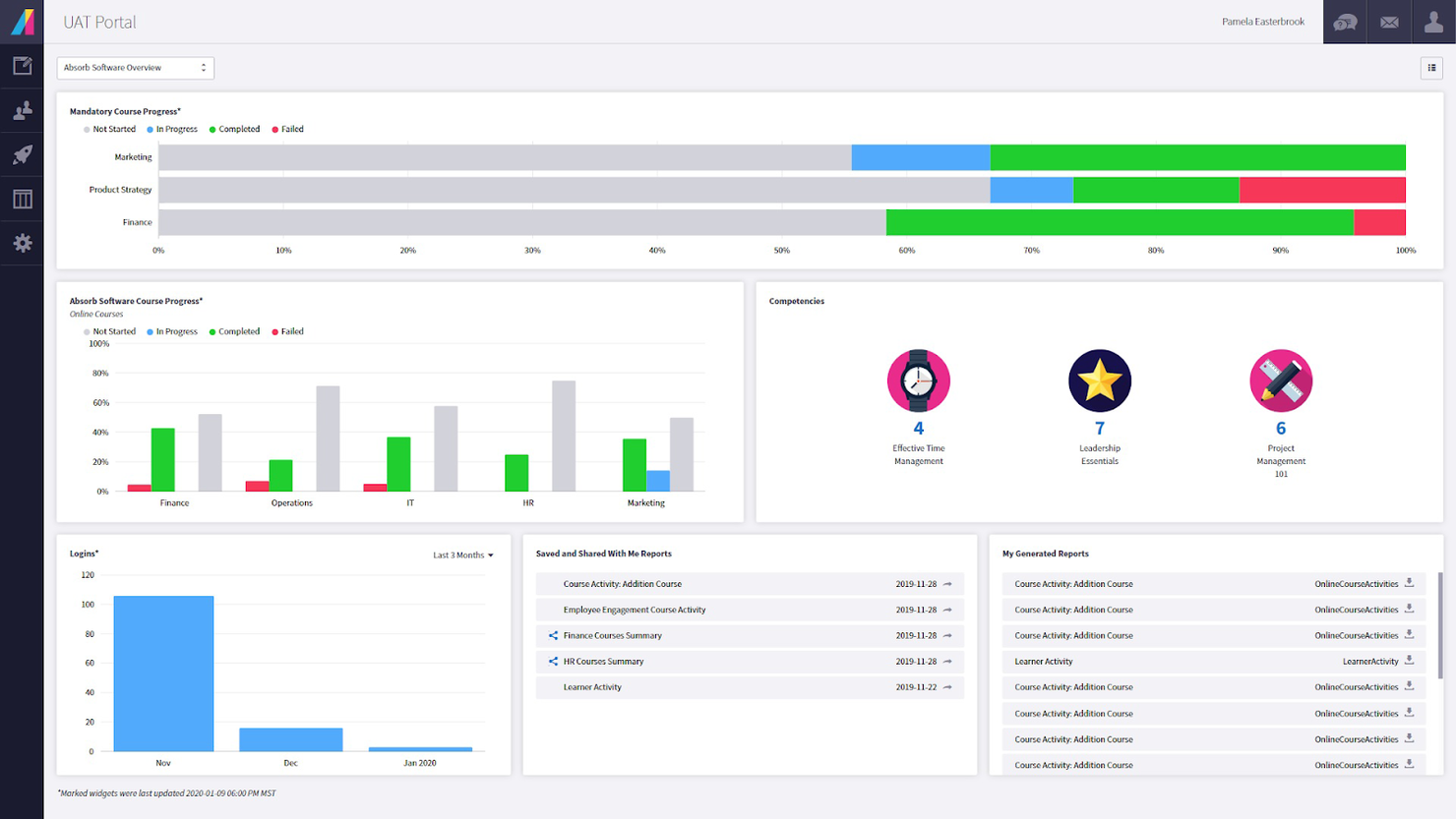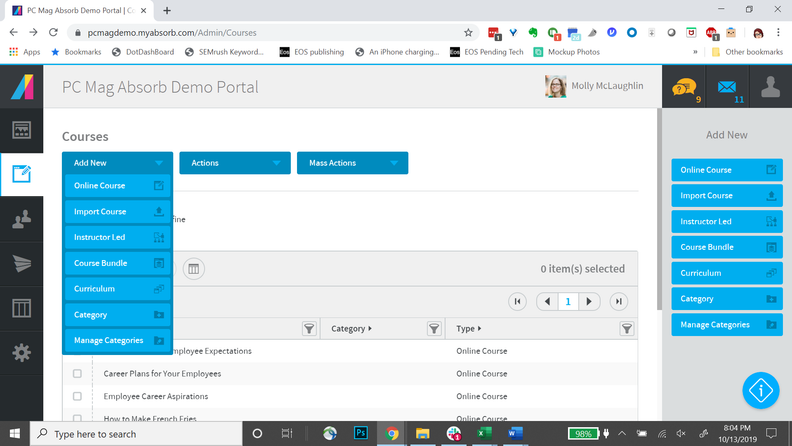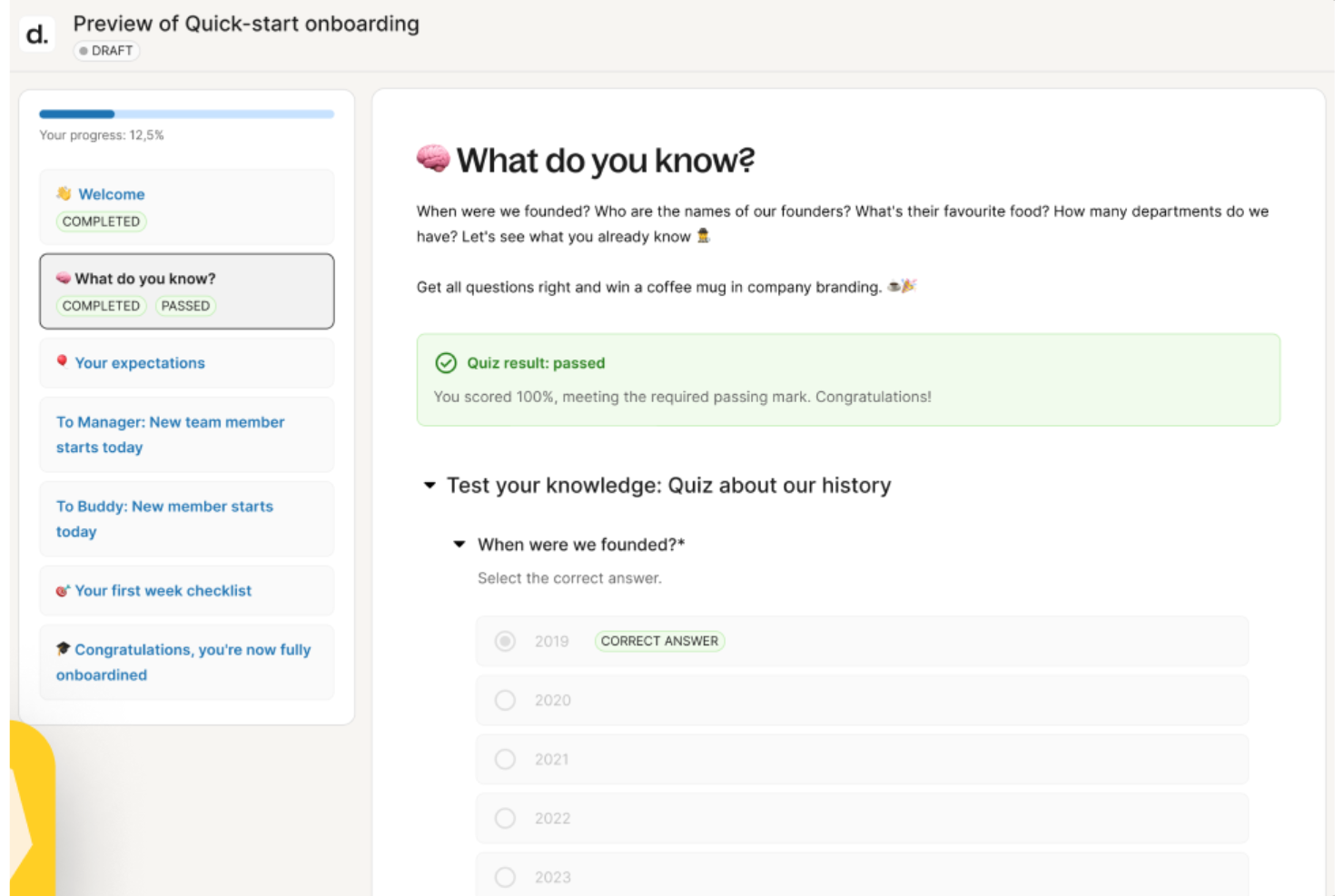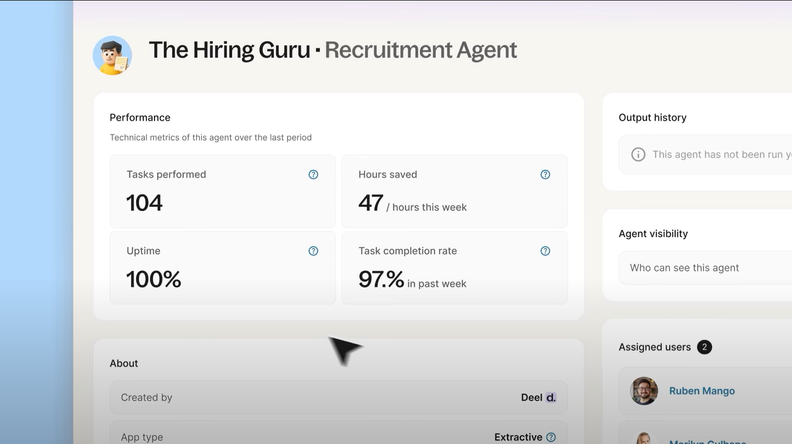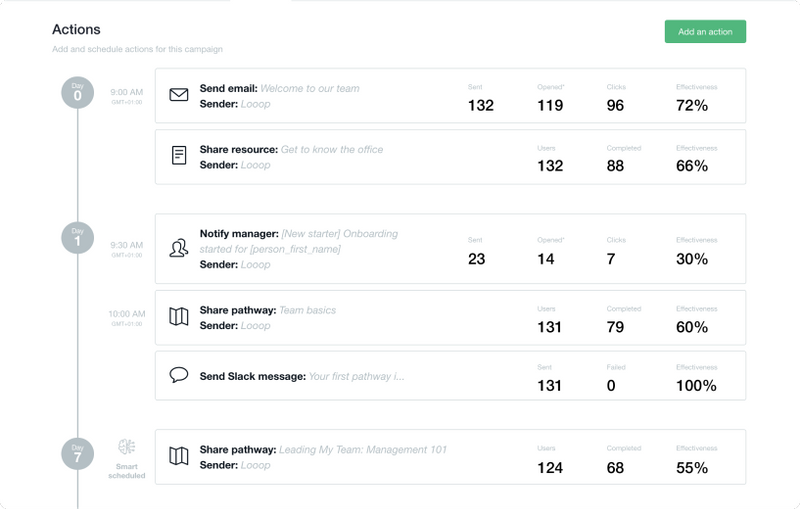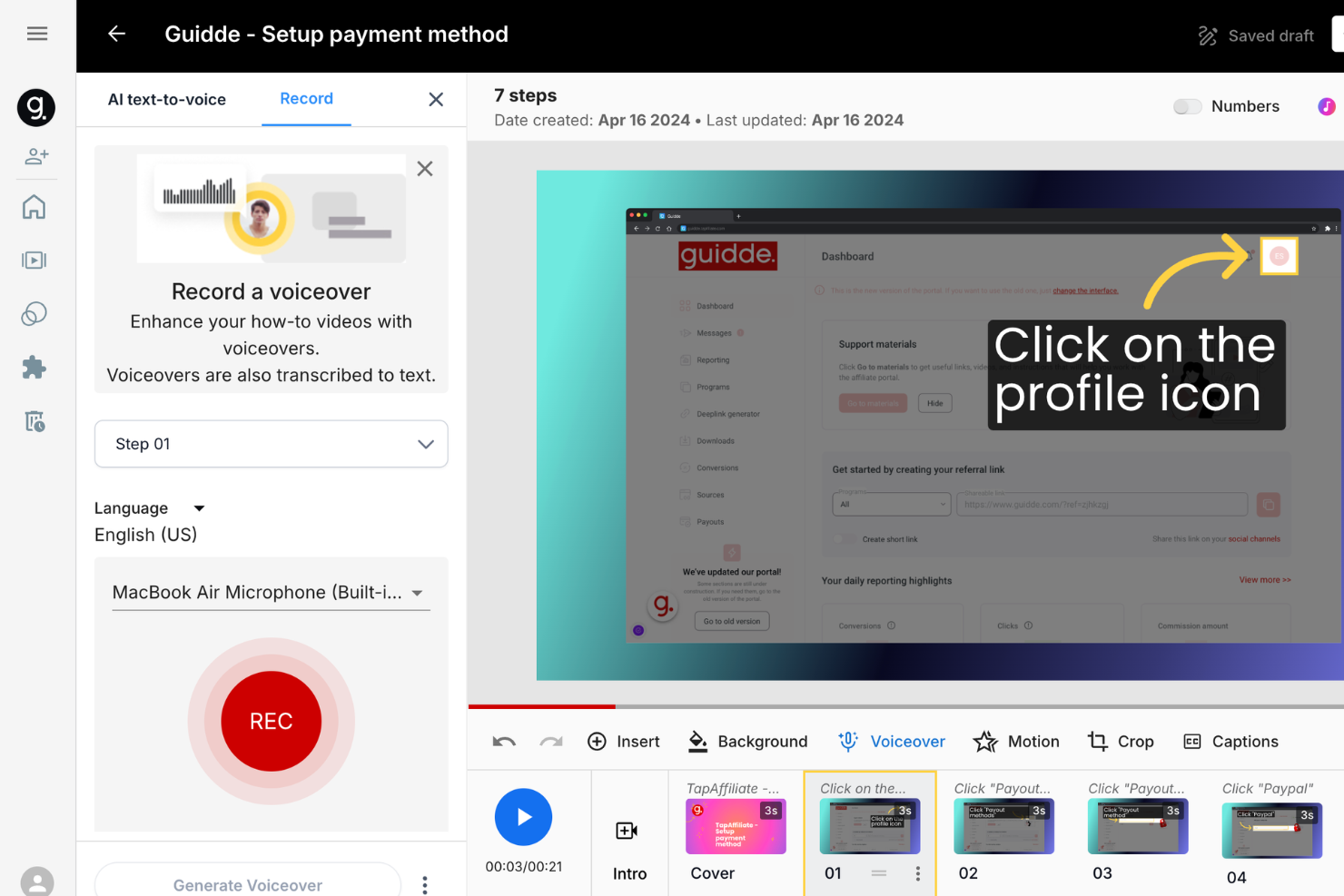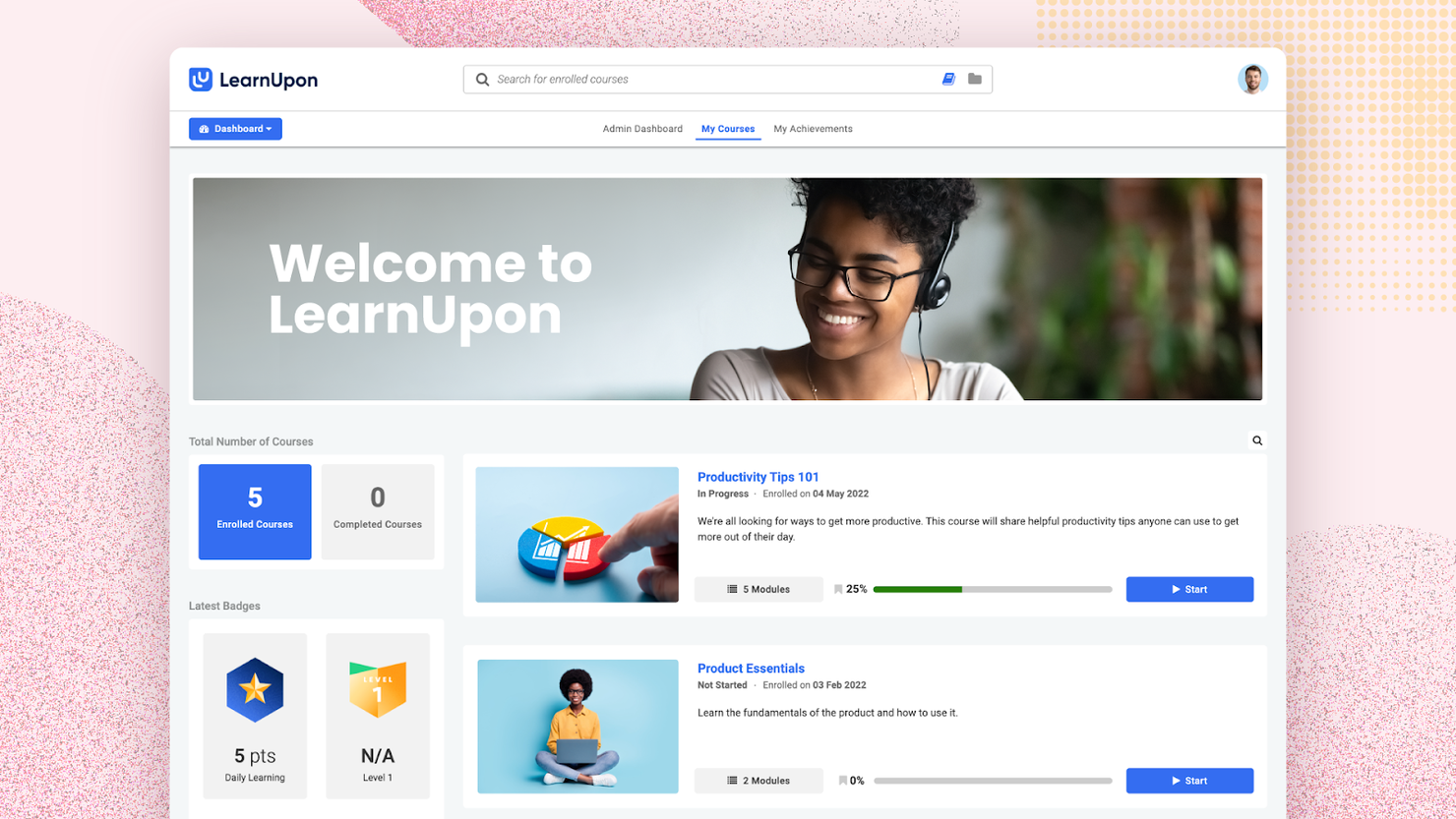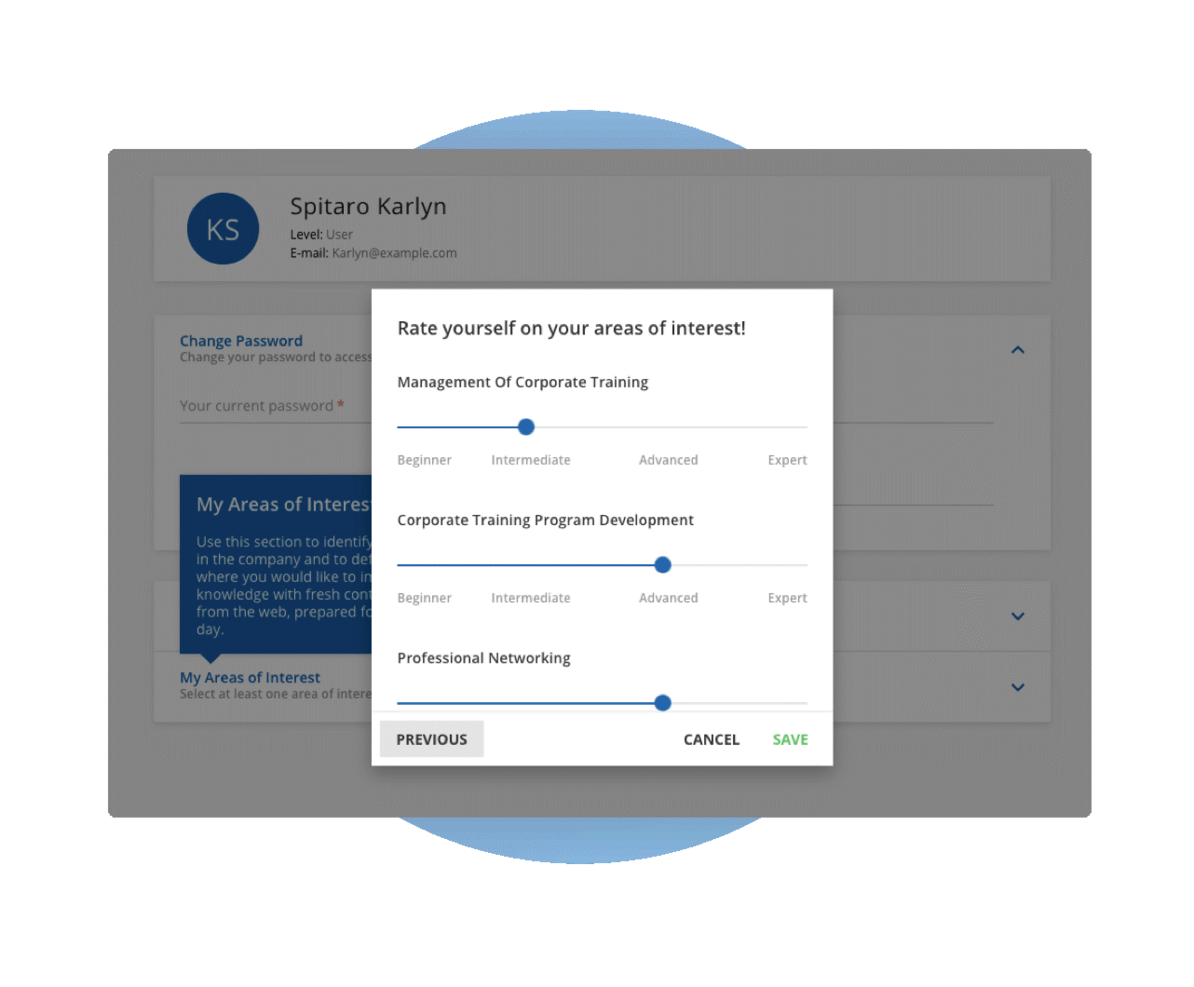10 Best Training Management Software Shortlist
Here's my pick of the 10 best software from the 20 tools reviewed.
With so many different training management software available, figuring out which is right for you is tough. You know you want software to help you create and distribute internal training materials and track learner progress and knowledge retention, but you need to figure out which tool is best. In this post, I'll help you make your choice easy by sharing my insights on the best training management software to optimize your training processes based on my years of personal experience managing an internal training program and monitoring compliance.
Why Trust Our Software Reviews
Best Training Management Software Summary
This comparison chart summarizes pricing details for my top training management software selections to help you find the best one for your budget and business needs.
| Tool | Best For | Trial Info | Price | ||
|---|---|---|---|---|---|
| 1 | Best for building onboarding programs and learning paths | Free demo available | Pricing upon request | Website | |
| 2 | Best for automated course scheduling | Free trial available | From $105/month (billed annually) | Website | |
| 3 | Best training management software for internal training | Free trial + free demo | Pricing upon request | Website | |
| 4 | Best training management software with AI-powered capabilities | Free trial + demo available | From $29/month | Website | |
| 5 | Best LMS for an intuitive user experience | Free trial + demo available | From $3.70/user/month (billed annually) | Website | |
| 6 | Best training management for automated learning pathways | Free trial + free demo | Pricing upon request | Website | |
| 7 | Best for AI-driven video tutorials | Free plan available | From $16/user/month | Website | |
| 8 | Best training management software for ecommerce | Free trial available. | From $8.32/user/month. | Website | |
| 9 | Best training management software for enterprises | Free demo available | Pricing upon request | Website | |
| 10 | Best training management software for personalized learning and development | Free demo available | Pricing upon request | Website |
-

Kudoboard
Visit WebsiteThis is an aggregated rating for this tool including ratings from Crozdesk users and ratings from other sites.4.8 -

Rippling
Visit WebsiteThis is an aggregated rating for this tool including ratings from Crozdesk users and ratings from other sites.4.8 -

Paylocity
Visit WebsiteThis is an aggregated rating for this tool including ratings from Crozdesk users and ratings from other sites.4.5
Best Training Management Software Reviews
Below are my detailed summaries of the best training management software that made it onto my shortlist. My reviews offer a detailed look at the key features, pros & cons, integrations, and ideal use cases of each tool to help you find the best one for you.
Best for building onboarding programs and learning paths
Mitratech Perform is an online platform that allows managers to track and monitor employee performance throughout their careers. It helps organizations set goals, provide feedback on performance, and develop employee skills.
Why I picked Mitratech Perform: Mitratech Perform provides a comprehensive suite of features to support the development and retention of employees in any organization, regardless of size. Its platform allows users to develop customized learning plans tailored to individual needs, measure progress, and assign tasks quickly and easily. By creating custom learning plans for each employee, you can ensure your employees get the most out of their training experience while working towards organizational objectives.
Mitratech Perform Standout Features & Integrations
Their multimedia course creation feature is a highly effective tool that allows curricula to be easily created and tailored. Through its intuitive platform, Mitratech Perform simplifies the course creation process by providing templates, drag-and-drop features, and interactive slides. Those building the course can customize the lessons' look and feel while weaving in important teaching points. This gives them added control over the quality of learning in those courses.
Mitratech Perform's SCORM compliance feature offers an efficient and effective means of integrating training courses from external sources into their online training management software. SCORM is a standard for packaging, launching, tracking, and reporting content used within the software. It allows users to integrate third-party e-learning content into their existing platform and ensure that course progress data and scores are synced across different vendors.
Integrations are available with HR systems and CRM software, and with content creation tools like Canva, Vimeo, and HTML, allowing instructional designers to create rich, engaging learning experiences that meet the needs of learners of all levels.
Pros and cons
Pros:
- Integrates with other Mitratech Perform modules for easy onboarding workflows
- Easy to integrate SCORM content from third-party providers
- Training progress can be linked to specific employee performance goals
Cons:
- Pricing details and plan features are not transparent
- Small list of pre-built integrations
Best for automated course scheduling
Arlo is a cloud-based training management software aimed at organizations that run instructor-led, blended, or online training. It serves as a central platform where you schedule courses, manage registrations, handle payments, and track learner progress.
Why I picked Arlo: You can use Arlo’s course scheduling system to set up and manage your training—including face-to-face sessions, live online webinars, multi‑session courses, and blended formats—all in one place. You get templates to pre‑fill course details, manage venues and presenters, and even view availability on a calendar before you publish. This makes it easy for your team to plan recurring events or complex training programs without juggling multiple tools.
Arlo Standout Features & Integrations
Features include automations like emails—confirmation, reminders, venue or webinar details, certificates, surveys, and expiration notices for credentials. It even supports waitlist management automation.
Arlo also includes financial admin capabilities. The platform can generate invoices, accept payments (by card, bank transfer, or invoice), track partial payments, apply discounts or vouchers, and report on revenue.
Integrations include Zoom, WordPress, Salesforce, Xero, Freshbooks, Quickbooks, Sage, Mailchimp, Marketo, Moodle, Stripe, and Make.
Pros and cons
Pros:
- Centralized course and event scheduling with templates
- Real-time reporting and CRM give insight into performance
- Automated workflows for bookings, reminders, certificates
Cons:
- No built-in support for multi-language UI
- Setup and initial configuration can be complex
Absorb LMS is a cloud-based eLearning solution that helps organizations create engaging courses and training materials for their employees.
Their software is highly customizable and allows L&D managers to design and localize their organization’s learning portal. The platform supports multimedia content formats and its mobile-responsive design allows users to access the training material on any device. The solution also offers a mobile app that allows users to continue their training when they’re offline and then syncs their progress when their device connects to the internet.
Absorb LMS enables managers to build a content library that users can access whenever they want. Users can create profiles to keep track of their accomplishments, interact with other learners, and rate courses. Managers can promote user engagement with gamification and collect feedback with polls and surveys.
Absorb LMS Standout Features and Integrations
Features include content creation, user administration, AI-driven recommendations, eCommerce, analytics, instructor-led training, and performance tracking.
Integrations are available natively with multiple apps, including BambooHR, Ceridian Dayforce, Cisco Webex, Namely, Oracle Peoplesoft, Salesforce, Workday, and Zoom.
Pros and cons
Pros:
- Offline and online learning
- Great customization and localization options
- Responsive customer support
Cons:
- Search filters are not very specific
- System has a learning curve
New Product Updates from Absorb LMS
Absorb LMS Introduces Multiple Course Catalogs for Targeted eCommerce Marketing
Absorb LMS now supports separate course catalogs for eCommerce, enabling multiple public dashboards and targeted course marketing. For more information, visit the Absorb Help Center.
Deel Engage is a comprehensive talent development platform designed to meet the diverse needs of modern businesses. It combines an LMS, career progression frameworks, and performance management tools in one place.
Why I picked Deel: I selected Deel because of its robust AI-powered learning management system that allows businesses to manage and deploy training courses quickly and easily through its drag-and-drop interface. Its automation features also allow for the automatic assignment of courses based on specific criteria, like departments, start dates, and employee roles, ensuring everyone gets the training they need without requiring the manual effort of HR teams.
Deel Standout Features & Integrations
Features aside from Deel's learning management system include a customizable performance review system and a career development framework, which defines clear career paths and competencies for employees.
Furthermore, Deel's advanced tracking capabilities include pre-built dashboards that allow managers to monitor training progress and completion rates in real time. The platform also offers a comprehensive library of courses, including internal and external resources that cater to diverse training needs and skill development across the organization.
Integrations include Workday, Personio, BambooHR, and other popular HR systems. Deel offers a Slack integration with plugins and custom integrations with its open API.
Pros and cons
Pros:
- Intuitive drag-and-drop interface
- Automates training workflows
- Seamless integration with Deel HR
Cons:
- Could offer more customization options
- Learning curve for new users
New Product Updates from Deel
Introducing Deel AI Workforce
Deel has launched the AI Workforce, a set of specialized agents designed to handle repetitive HR, payroll, and compliance tasks with speed and accuracy. These AI agents don’t just assist—they execute tasks from start to finish. For more information, visit Deel's official site.
iSpring Learn is a web-based training management solution that helps organizations onboard new hires with personalized learning experiences.
Their LMS software is simple to use. L&D administrators can customize the learning portal with their organization’s brand colors, domain, and logo. They can also upload training materials, combine them to create custom learning programs, and invite employees and external collaborators to the platform.
iSpring Learn comes with a mobile app that’s compatible with Android and iOS devices, so users can access the training content while they’re on the go. The platform tracks the users’ learning progress and can send completion notifications to their managers.
iSpring Learn Standout Features and Integrations
Features include content management, user management, training management, reporting, learner portal, and LMS customization.
Integrations include ADP, BambooHR, Salesforce, Workday, and Zoom.
Pros and cons
Pros:
- Creates a branded learning environment
- Easy to create onboarding workflows
- Works on mobile devices
Cons:
- More software integrations would be welcomed
- Convoluted pricing rubric (many add-on options)
Looop is an end-to-end online learning platform that helps L&D managers use automation to create specific learning pathways for each team or individual.
The solution is highly customizable, allowing managers to build branded learning journeys that include assessments, challenges, and quizzes. The software’s UI is clean and easy to understand. Course or pathway creators can include triggers so the app can perform certain actions, such as sending custom messages when specific criteria are met, so they can create fully-automated pathways.
Looop is a learning platform that helps businesses of all sizes simplify their L&D processes with automation. The software comes with multiple templates, so even people who are not tech-savvy can create and automate training programs without difficulty. The tool’s analytics helps managers benchmark their L&D initiatives against business metrics, so they can assess their effectiveness.
Looop Standout Features and Integrations
Features include analytics, built-in communication, custom certificate creation, and assessments.
Integrations are available natively with multiple apps, including Google Drive, LinkedIn Learning, Microsoft Teams, OneDrive, OneLogin, Salesforce, and Slack.
Pros and cons
Pros:
- Outstanding automation capabilities
- Easy setup and pathway creation
- Good reporting features
Cons:
- Fitting images to banners could be easier
- Automated emails may end up in spam
Guidde is an AI-driven platform that focuses on simplifying the process of creating video documentation. It’s designed to help teams produce professional tutorials quickly, making it a valuable tool for training management.
Why I picked Guidde: I picked Guidde because it excels at transforming workflow captures into detailed tutorials. This feature is perfect for creating training materials as it allows you to convert complex processes into easy-to-understand videos, which is crucial for effective learning. Additionally, the ability to deliver targeted content ensures that your team receives relevant information tailored to their specific needs, enhancing the learning experience.
Guidde Standout Features & Integrations
Features include the ability to generate various types of documentation, including SOPs, onboarding documents, and FAQs. This versatility means you can use it to create comprehensive training resources that cover all aspects of your organization's processes.
Additionally, Guidde supports customizable voiceovers in multiple languages, allowing for a personalized touch in your training videos.
Integrations include Salesforce, Workday, Coupa, ServiceNow, Oracle Netsuite, SAP, Atlassian, Dynamics 365, and monday.com.
Pros and cons
Pros:
- Provides customizable branding
- Training material creation with AI-driven workflow capture
- Offers text-to-voice generation in multiple languages and accents
Cons:
- Could offer more integrations
- Focus on video content may not suit all training scenarios
LearnUpon is an LMS that helps eCommerce businesses to create bespoke courses for their audiences and sell them via eCommerce storefronts.
The software enables managers to create responsive customer portals so users can access their training material on any device. Using a combination of in-app messaging, notifications, and gamification, the tool encourages learners to complete their education and certify their skills.
LearnUpon integrates with popular eCommerce solutions, so managers can publish and advertise their learning content without difficulty. The platform enables store owners to accept payment in multiple currencies, generate promotional codes or coupons, and handle VAT or sales taxes.
LearnUpon Standout Features and Integrations
Features include course creation, user management, on-demand training, webinar delivery, learner feedback, and reporting.
Integrations are available natively with several solutions, including Cisco Webex, Degreed, Microsoft Teams, PayPal, Salesforce, Shopify, Stripe, and Zoom.
LearnUpon Plans and Pricing
LearnUpon offers custom pricing upon request.
Pros and cons
Pros:
- Good automation capabilities
- Customizable user portals
- Built-in SEO and eCommerce functionalities
Cons:
- Automated emails might end up in spam folders
- Limited gamification options
Docebo is an employee training software that helps enterprises run online upskilling and reskilling programs.
Their software is customizable, allowing each organization to tailor the platform to its training needs. With built-in communication and engagement features, Docebo allows employees to connect with learners from multiple locations who share similar interests and become part of learning communities.
Docebo allows L&D managers to create audience-specific pages and run social-based or reward-based competitions to encourage learning. The tool’s analytics features allow organizations to oversee and systemize their training initiatives, optimizing them to engage larger audiences.
Docebo Standout Features and Integrations
Features include social learning, mobile learning, virtual coaching, automation, and personalized upskilling and reskilling.
Integrations are available natively with dozens of solutions, including BigCommerce, Box, Cisco Webex, Drift, GitHub, Google Analytics, Gusto, Jira and Zoom.
Docebo Plans and Pricing
Docebo offers custom pricing upon request, as well as a free demo.
Pros and cons
Pros:
- Great learner progress tracking capabilities
- Encourages immersive learning experiences
- Versatile, customizable platform
Cons:
- Notifications could be easier to set up
- Salesforce integration can be glitchy at times
eloomi
Best training management software for personalized learning and development
eloomi is a learning management system (LMS) that leverages artificial intelligence and automation to provide businesses with a platform for employee training and development.
Why I chose eloomi: eloomi's upskilling platform presents an extensive library of courses designed to cater to diverse learning needs across various industries, enabling employees to acquire new skills and enhance their professional development. eloomi also provides automated development journeys, which streamline the learning process and offer personalized learning paths that adapt to each user's pace and progress, ensuring that every employee has the tools they need to succeed.
eloomi's development journeys are also highly customizable, allowing organizations to tailor learning paths to the specific competencies and skills required for different roles by selecting relevant courses or creating bespoke content. These paths are structured with clear milestones and integrated feedback mechanisms, providing a personalized and goal-oriented learning experience.
eloomi Standout Features & Integrations
Standout features include eloomi's robust feedback and recognition system, which fosters a positive learning culture by enabling real-time feedback and accolades for learners' progress and achievements. eloomi is also equipped with powerful analytics tools that provide insightful data on learner progress, engagement, and completion rates. These tools enable managers and HR professionals to make informed decisions about their talent development strategies, identifying areas where learners excel and where additional support is needed.
Integrations include Workday, SAP SuccessFactors, Sage, HubSpot, ADP Workforce Now, and Google Workplace, among others.
Pros and cons
Pros:
- Highly customizable to suit various contexts
- Lots of helpful AI features
- Intuitive, user-friendly, and easy to implement
Cons:
- Pricing is not transparent
- Potential quality issues with translation
Other Training Management Software
Here are some additional training management software options that didn’t make it onto my shortlist, but are still worth checking out:
- WeSchool
Solution to simplify corporate training
- Litmos
Training management software for corporate training
- Constructor Tech
Training management software that fosters active learning
- Compass
For training on new software
- FLX Systems
For training non-office workers
- Tovuti LMS
Training management software for complex learning paths
- Seismic’s Lessonly
Training management software for sales teams
- SkyPrep
For new process/new systems training
- Connecteam
For non-tech savvy employees for onboarding and basic job training
- Qooper
For training through social learning and mentorship
Training Management Software Selection Criteria
When selecting the best training management software to include in this list, I considered common buyer needs and pain points like tracking employee progress and managing training schedules. I also used the following framework to keep my evaluation structured and fair:
Core Functionality (25% of total score)
To be considered for inclusion in this list, each solution had to fulfill these common use cases:
- Manage training schedules
- Track learner progress
- Generate reports and analytics
- Create and deliver content
- Support multiple learning formats
Additional Standout Features (25% of total score)
To help further narrow down the competition, I also looked for unique features, such as:
- Gamification elements
- AI-driven learning paths
- Virtual reality integration
- Social learning capabilities
- Mobile offline access
Usability (10% of total score)
To get a sense of the usability of each system, I considered the following:
- Intuitive interface
- Easy navigation
- Quick access to features
- Minimal learning curve
- Responsive design
Onboarding (10% of total score)
To evaluate the onboarding experience for each platform, I considered the following:
- Availability of training videos
- Interactive product tours
- Access to templates
- Supportive webinars
- Chatbot assistance
Customer Support (10% of total score)
To assess each software provider’s customer support services, I considered the following:
- Availability of live chat
- 24/7 support options
- Comprehensive knowledge base
- Email response time
- Personalized support
Value For Money (10% of total score)
To evaluate the value for money of each platform, I considered the following:
- Competitive pricing
- Free trial availability
- Pricing transparency
- Features included in base price
- Discounts for longer commitments
Customer Reviews (10% of total score)
To get a sense of overall customer satisfaction, I considered the following when reading customer reviews:
- Positive user feedback
- Commonly mentioned issues
- Ratings on reliability
- Comments on ease of use
- Feedback on customer service
How to Choose Training Management Software
It’s easy to get bogged down in long feature lists and complex pricing structures. To help you stay focused as you work through your unique software selection process, here’s a checklist of factors to keep in mind:
| Factor | What to Consider |
|---|---|
| Scalability | Can the software grow with your team? Consider future needs and whether the tool can handle increasing users and data without extra costs or performance issues. |
| Integrations | Does it work with your current systems? Check compatibility with HR, payroll, and other tools to avoid data silos and streamline workflows. |
| Customizability | Can you tailor it to fit your processes? Look for options to customize dashboards, reports, and user roles to match your team’s needs. |
| Ease of use | Will your team use it confidently? Evaluate the interface and navigation. A simple, intuitive design reduces training time and boosts adoption. |
| Implementation and onboarding | How quickly can you get started? Assess the support for setup, training resources, and any required time or effort from your team to get the software running. |
| Cost | What’s the total cost of ownership? Look beyond the price tag. Factor in subscription fees, setup costs, and any hidden charges for a clear financial picture. |
| Security safeguards | How safe is your data? Ensure the software complies with data protection standards and offers encryption, access controls, and regular security updates. |
What Is Training Management Software?
Training management software is a tool that helps organize, deliver, and track employee training programs. HR professionals, training coordinators, and managers typically use these tools to enhance learning and development. Scheduling, tracking progress, and generating reports help with managing training efficiently and meeting organizational goals. Overall, these tools simplify training processes and improve workforce development.
Features
When selecting training management software, keep an eye out for the following key features:
- Scheduling: Allows you to plan and organize training sessions efficiently, ensuring no overlap or conflicts.
- Progress tracking: Monitors learner progress and performance, providing insights into training effectiveness and areas needing improvement.
- Reporting and analytics: Generates detailed reports to help assess the impact of training and make informed decisions.
- Content delivery: Supports multiple formats for delivering training materials, accommodating different learning styles.
- Integrations: Connects with existing HR and payroll systems to streamline data flow and enhance functionality.
- Customizability: Offers options to tailor dashboards, reports, and user roles to fit specific organizational needs.
- Mobile access: Allows learners to access training materials on-the-go, increasing flexibility and engagement.
- Security safeguards: Protects sensitive data with encryption and access controls, ensuring compliance with data protection standards.
- User-friendly interface: Provides an intuitive design that simplifies navigation and reduces the learning curve for users.
- Onboarding support: Includes resources like training videos and interactive tours to facilitate smooth implementation and adoption.
Benefits
Implementing training management software provides several benefits for your team and your business. Here are a few you can look forward to:
- Improved organization: Scheduling and content delivery features keep training programs well-organized and easy to manage.
- Enhanced tracking: Progress tracking and reporting provide insights into learner performance, helping identify areas for improvement.
- Time savings: Automating administrative tasks like scheduling and reporting frees up time for more strategic activities.
- Increased accessibility: Mobile access allows learners to engage with training materials anywhere, increasing flexibility and participation.
- Better data integration: Integrations with existing systems ensure a smooth flow of information across platforms, reducing data silos.
- Stronger security: Security safeguards protect sensitive information, ensuring compliance with data protection regulations.
- Customizable experience: Customizability lets you tailor the software to fit your specific processes, enhancing user satisfaction.
Costs & Pricing
Selecting training management software requires an understanding of the various pricing models and plans available. Costs vary based on features, team size, add-ons, and more. The table below summarizes common plans, their average prices, and typical features included in training management software solutions:
Plan Comparison Table for Training Management Software
| Plan Type | Average Price | Common Features |
|---|---|---|
| Free Plan | $0 | Basic scheduling, limited reporting, and community support. |
| Personal Plan | $5-$25/user/month | Enhanced tracking, mobile access, and email support. |
| Business Plan | $30-$75/user/month | Advanced analytics, integrations, and customizability. |
| Enterprise Plan | $100+/user/month | Comprehensive security, full customization, and dedicated account management. |
Training Management Software FAQs
Here are some answers to common questions about training management software:
Can training management software handle external learners or non‑employees (e.g., contractors or partners)?
Yes, many systems let you assign learning to external users by creating guest accounts or using separate portals. You can control access levels, track their progress separately from internal staff, and provide certificates upon completion. This makes it easier to include contractors, vendors or partners in your training flow without mixing them into your employee records.
What kind of reporting and analytics can training management software provide for my team?
Training management software often gives dashboards and reports on learner completions, overdue courses, and course performance. It can help identify learners who haven’t completed required sessions and highlight courses that may need to be refreshed. You can use these insights to guide your training schedule and track compliance or development progress.
What's the difference between training management software and a learning management system?
The main difference between training management software and a learning management system is their intended use.
Training management software is designed to help L&D managers organize the back-end aspects of their training operations. For example, tasks like how to assign resources, create schedules, promote courses, and so on.
On the other hand, learning management systems are designed to help managers create learning journeys, deliver educational content to students, assess candidates through quizzes, offer certifications, and so on.
However, the systems are complementary to each other and modern solutions can often be used interchangeably.
How long does it take to implement training management software?
Implementation time varies based on the software’s complexity and your team’s readiness. Simple systems might take a few days, while more complex setups could take weeks. Plan for training sessions and allocate resources to ensure a smooth transition. Consider starting with a pilot group to iron out any issues.
Do I need technical expertise to use training management software?
No, most training management software is designed for non-technical users. They typically offer user-friendly interfaces and provide support resources like tutorials and customer service. However, having someone with technical skills can be helpful during the initial setup or if you plan to integrate with other systems.
What’s Next:
If you're in the process of researching training management software, connect with a SoftwareSelect advisor for free recommendations.
You fill out a form and have a quick chat where they get into the specifics of your needs. Then you'll get a shortlist of software to review. They'll even support you through the entire buying process, including price negotiations.






